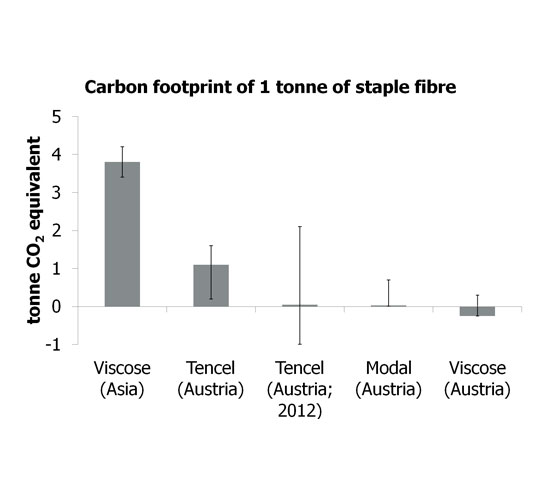Metrics
A peer-reviewed life cycle assessment from 2010 [1] analysed the environmental implications of five man-made cellulose fibres produced by Lenzing in either Asia or Austria. The carbon footprint findings are shown on the figure to the left. The figure includes a new (2012) version of Tencel that was due to be produced with energy recovered from waste, a lower carbon form of energy.
The study concluded that modern man-made cellulose fibres have a “clear potential” to reduce environmental impacts compared to other fibres.
1. Shen L, Worrell E, Patel MK, 2010, Environmental impact assessment of man-made cellulose fibres", Resources, Conservation and Recycling, Vol 55, pp.260-74.
